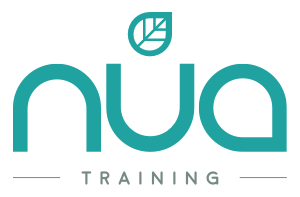
The pandemic bought with it, a fast-paced change to the world of work. We found new ways to connect, communicate and achieve results – all whilst working remotely.
We are now entering a new hybrid work era, where business leaders and managers have a unique opportunity to build on these key learnings, reviewing and adapting traditional behaviours, in order for their teams to thrive.
So, with this in mind, what is the best way to empower, motivate and lead hybrid teams?
Here are 5 top tips to help set you up for success:
1. Lead with Clarity and Empathy
Empathetic leadership is the future and leading with empathy, compassion and genuine care for the wellbeing of hybrid teams, especially in a post pandemic world, is pivotal. Incorporate authentic empathy into your management style and create psychological safety by maintaining open communication, promoting a culture of openness and expressing gratitude and appreciation. Empathetic leadership is a required skillset for high-performing teams in this new world of work, and like any skill, proficiency only comes with practice.
Leading with clarity is also key because lack of clarity can spur anxiety. When teams are located in different places, clear leadership becomes even more important, as everyone needs to be on the same page and pulling in the same direction.
Empathetic leadership and clarity are a required skillset for high-performing teams in this new world of work, and like any skill, proficiency only comes with practice.
2. Develop Daily Rituals
Managers need to be disciplined about checking in with their hybrid teams regularly – even multiple times a day. Meetings are a must for most collaborative teams but become even more important when teams are not co-located. Being clear and consistent about your team’s daily rhythms will keep everyone on the same page, encouraging both clarity and a joined-up approach.
3. Network and Connections
The hybrid work model presents many benefits, but also some challenges. New starters who joined during the pandemic, may have joined with less access to senior individuals within the business. Managers must ensure networks are built from the outset with a hybrid model in mind, so that teams and individuals aren’t siloed from the rest of the organisation and have every opportunity to thrive.
4. Learning and Development
Hybrid working, brings with it a less of face-to-face contact. Whilst informal and social face-to-face learning opportunities between colleagues may have diminished to some degree, there is still a need to learn and gain new skills and knowledge, both essential for career development. As such leaders must dedicate time to help their hybrid teams learn and grow. Teams, regardless of location, must have the same support and access to resources and training to enable them to thrive. Remember not to cut corners here, as upskilling teams plays a key factor in attracting and retaining talent and ultimately helps to drive business growth.
5. Tool Up
For hybrid working to be effective, teams must have the right tools in place, both to do their jobs well but also to collaborate on projects. Managers need to invest in the right tools and set up for each team member’s unique situation. For remote workers, this may include better Wi-Fi, headsets and webcams or investing in online collaboration tools such as Slack or Trello. Consider what tools worked well when working remotely, and what else might be needed moving ahead to keep teams connected and together, regardless of location.
The new hybrid work era is here, and leaders need to utilise learnings from the pandemic to help them navigate this new hybrid work world, leaving bad practices behind and heralding new best practice hybrid habits that will make their teams and businesses thrive.
If you found this article useful and would like to know more about how to successfully manage hybrid teams, contact us at mary@nuatraining.co.uk.
